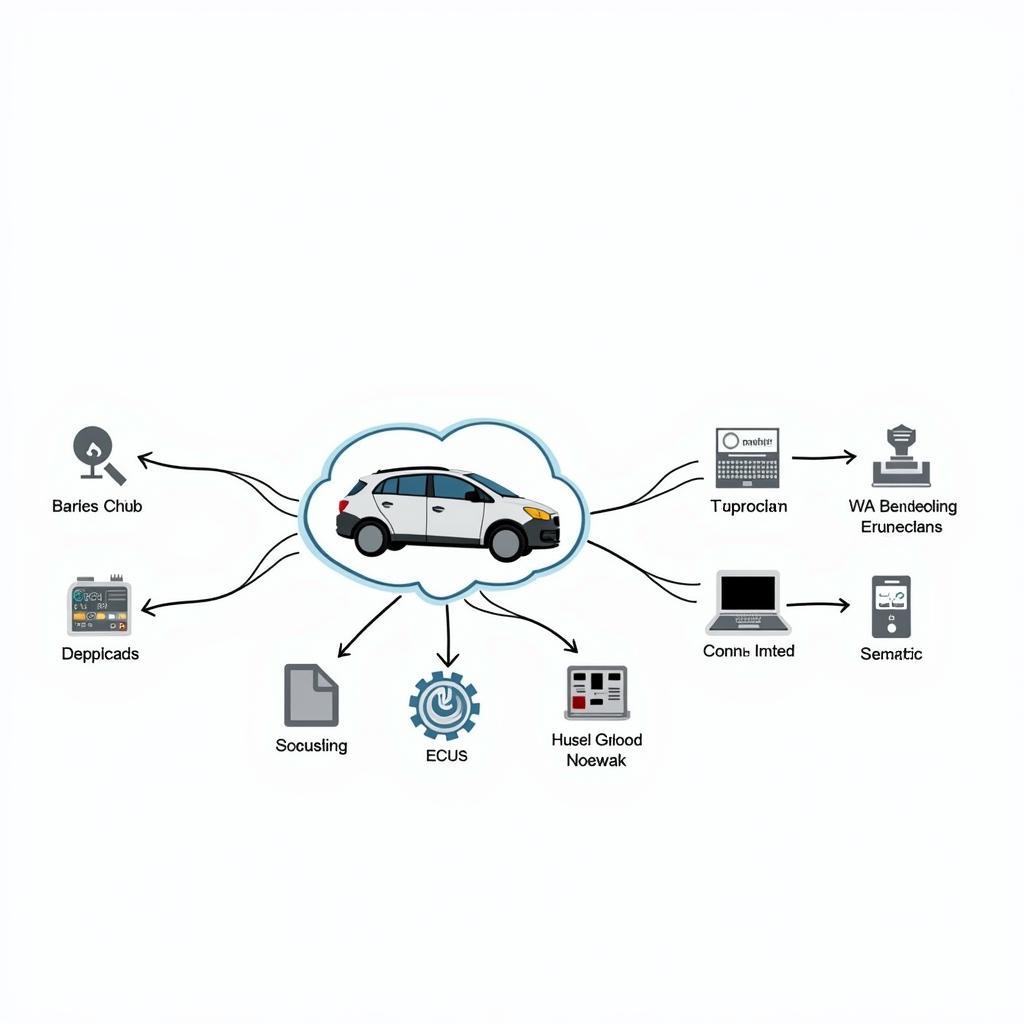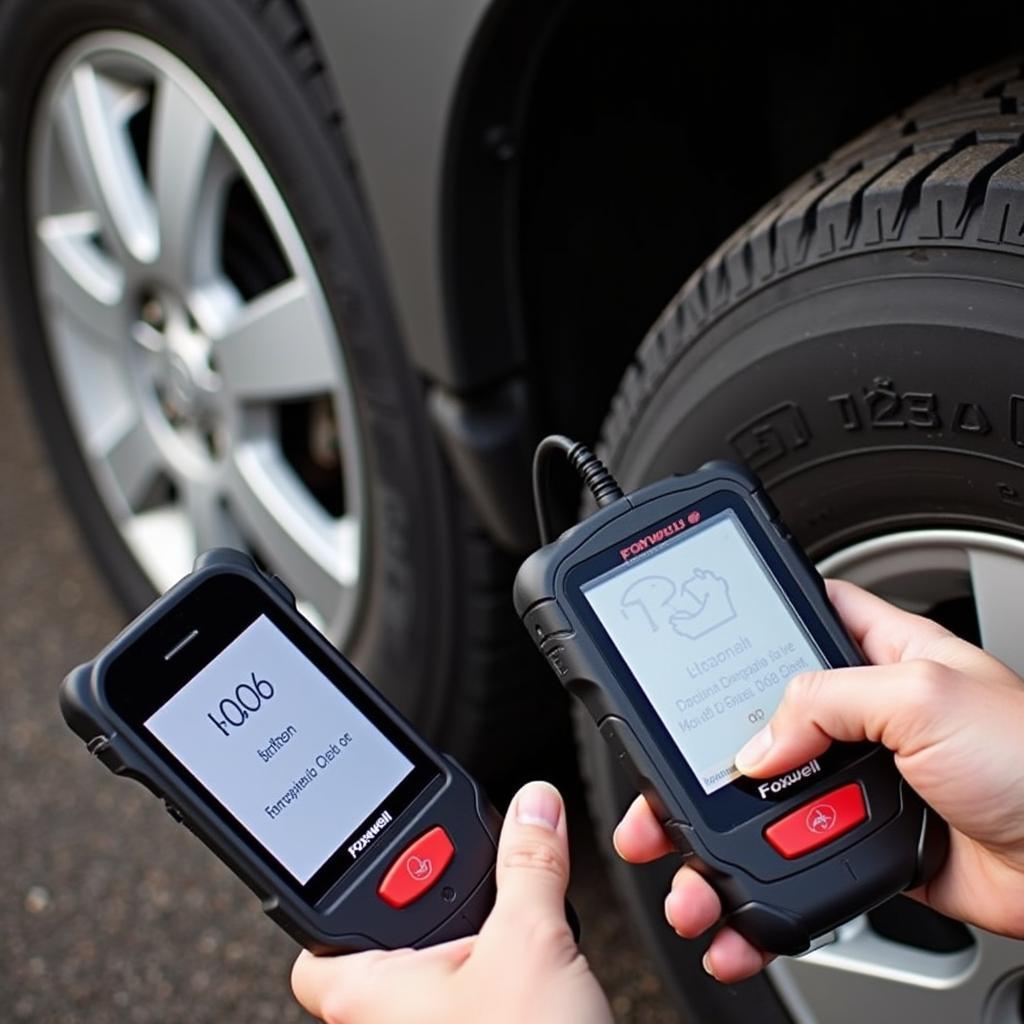As a car owner or a mechanic, you understand the importance of having a reliable diagnostic tool. Foxwell scanners, known for their advanced features and user-friendly interface, have become a staple in many garages. One of the most powerful features of these scanners is their ability to display live data, providing real-time insights into your vehicle’s performance. However, understanding the abbreviations used for this live data can be a challenge.
This comprehensive guide will delve into the world of Foxwell Live Data Abbreviations, demystifying the technical jargon and empowering you to interpret your vehicle’s diagnostics like a pro. Whether you’re a seasoned mechanic or a car enthusiast, this article will equip you with the knowledge to unlock the full potential of your Foxwell scanner.
Decoding the Language of Your Car: Why Live Data Matters
Before we dive into the abbreviations themselves, it’s crucial to understand why live data is so important. Imagine this: your car’s “check engine” light illuminates, striking fear into the heart of any driver. Instead of playing the guessing game, a Foxwell scanner with live data capabilities allows you to see exactly what’s happening within your engine and other systems in real time. This real-time information is invaluable for:
- Accurate Diagnosis: Live data provides specific parameters and values, enabling more accurate identification of the root cause of issues compared to simply reading error codes.
- Performance Monitoring: Enthusiasts can use live data to monitor critical performance indicators, such as boost pressure, fuel trims, and oxygen sensor readings, allowing for fine-tuning and optimization.
- Preventative Maintenance: Regularly checking live data can help identify potential issues before they escalate into major problems, saving you time, money, and headaches.
Common Foxwell Live Data Abbreviations and Their Meanings
Now, let’s unravel the mystery behind those cryptic abbreviations. Here are some of the most common ones you’ll encounter on your Foxwell scanner, along with their meanings and significance:
Engine:
- RPM: Revolutions Per Minute – Indicates engine speed.
- ECT: Engine Coolant Temperature – Shows the engine’s operating temperature.
- IAT: Intake Air Temperature – Measures the temperature of the air entering the engine.
- MAP: Manifold Absolute Pressure – Reflects the pressure inside the intake manifold.
- TPS: Throttle Position Sensor – Shows the position of the throttle pedal.
- O2S: Oxygen Sensor – Measures the oxygen content in the exhaust gases.
- STFT: Short Term Fuel Trim – Indicates adjustments made to the fuel mixture in the short term.
- LTFT: Long Term Fuel Trim – Shows long-term adjustments to the fuel mixture.
Transmission:
- TFT: Transmission Fluid Temperature – Displays the temperature of the transmission fluid.
- Gear: Current gear the transmission is engaged in.
Brakes:
- ABS: Anti-lock Braking System – Shows the status of the ABS system.
Other:
- Battery Voltage: Indicates the voltage of the vehicle’s battery.
- Vehicle Speed: Displays the vehicle’s speed as measured by the speed sensor.
This is not an exhaustive list, as the specific abbreviations may vary slightly depending on the Foxwell scanner model and the vehicle being diagnosed. However, it covers many of the essential parameters you’re likely to encounter.
Putting Knowledge into Action: Using Live Data for Troubleshooting
Understanding the abbreviations is just the first step. The real power comes from knowing how to interpret this data to diagnose and address issues. Let’s look at a few examples:
Scenario 1: High ECT and Poor Fuel Economy
You notice your car’s fuel economy has significantly dropped. Upon connecting your Foxwell scanner, you observe a consistently high ECT reading. This combination suggests a potential issue with the cooling system, such as a malfunctioning thermostat stuck in the closed position, preventing proper engine cooling and leading to increased fuel consumption.
Scenario 2: Fluctuating RPM at Idle
Your engine idles rough, with the RPM erratically fluctuating. Using your Foxwell scanner, you monitor the TPS readings while pressing and releasing the accelerator pedal. If the TPS values do not change smoothly or show intermittent drops, it could indicate a faulty TPS sensor, requiring replacement.
Tips for Effectively Using Foxwell Live Data
- Consult Your Vehicle’s Service Manual: For in-depth information on specific data parameters and their normal ranges for your vehicle model.
- Compare Readings: Compare live data readings to manufacturer specifications or known good values to identify deviations.
- Record and Track: Note down live data values over time to monitor changes and identify trends.
- Use Data Logging: Some Foxwell scanners offer data logging capabilities, allowing you to record live data during a test drive and analyze it later for intermittent issues.
- Seek Professional Help: If you encounter complex issues or are unsure about interpreting the data, consult a qualified mechanic.
Conclusion
Understanding Foxwell live data abbreviations empowers you to delve deeper into your vehicle’s inner workings, enabling more effective diagnostics, informed maintenance decisions, and ultimately, a smoother and more enjoyable driving experience. While this guide provides a foundational understanding, remember that continuous learning and exploration are key to mastering the art of automotive diagnostics.
If you’re looking for a reliable and feature-rich diagnostic tool, consider the Foxwell 510 scanner, which offers a wide range of live data parameters and advanced functionalities to help you stay on top of your car’s health.
For any further assistance or inquiries, feel free to contact ScanToolUS at +1 (641) 206-8880 or visit our office at 1615 S Laramie Ave, Cicero, IL 60804, USA. We’re here to support you on your automotive journey.


